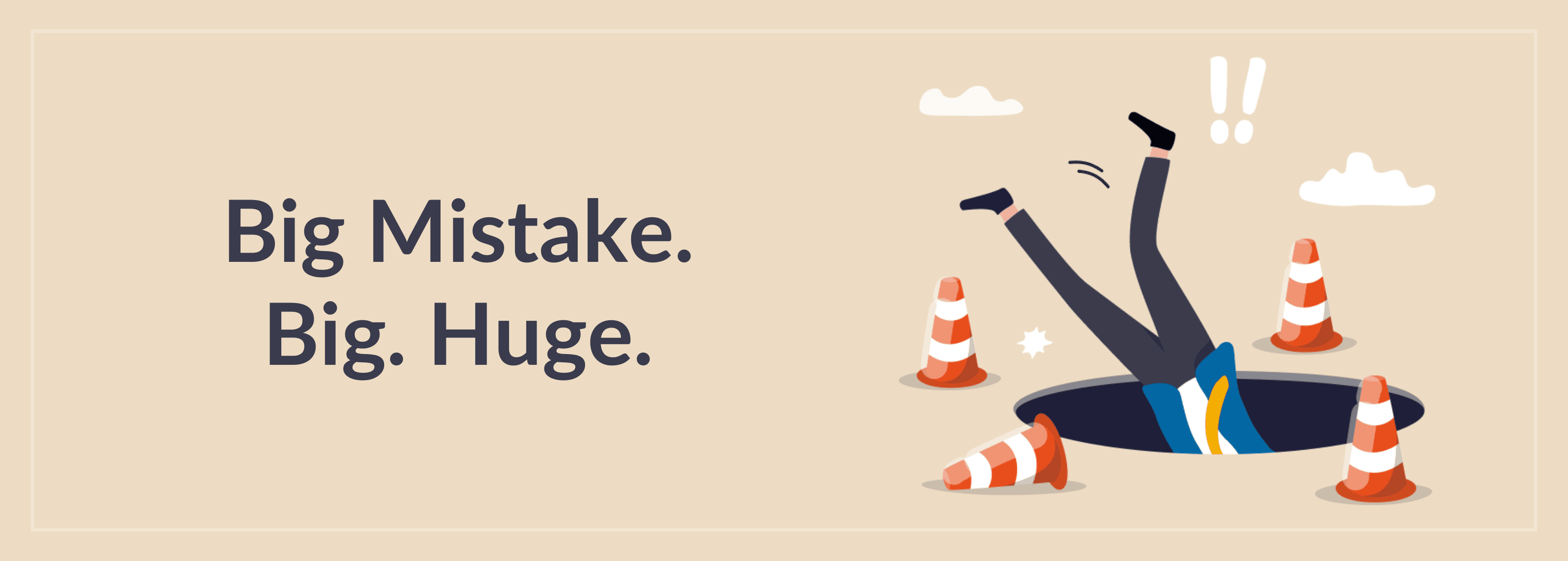Big Mistake. Big. Huge.
Around 2008, I and a friend walked into an upmarket bookstore selling toys, stationery, and other utility items.
We were dressed in traditional dhotis (for those who do not know, it is a South Indian attire). We asked one of the salespeople to pick up something from the top of the rack and show us.
He responded, stating, “That is very expensive.” He didn’t bother to pick it up and show it to us.
This friend of mine asked him, “Is it expensive for you or me?”
Did we score a point? I am afraid so.
The salesperson made a snap judgment and probably lost a sale because of that.
My wife and I rode a motorbike to an upmarket silk saree shop a few months ago. As soon as we reached, we asked the security guard at the entrance where we could park our bike.
He said they don’t have bike parking, and he wasn’t welcoming us either.
So, we decided to walk into another silk saree shop, happily shopped there, and bought loads of sarees.
The security guard made a snap judgment, looking at our bike.
How many of you have seen the movie Pretty Woman?
In the movie, Vivian, played by Julia Roberts, walks into a high-end boutique to buy conservative and not-so-revealing clothes. The staff snubs Vivian because of her appearance, assuming she can’t afford their products.
In another scene, she is guided by a hotel manager to another boutique, where they treat her with great respect and assist her in finding outfits that suit her.
So, she wears one of those conservative clothes, buys a bunch of stuff, and walks with a load of bags of different upmarket brands.
To stick to the boutique that did not take her seriously – she walks to that boutique in her new outfit, and now they are all ears.
She states, “I walked in here yesterday, and you did not wait on me. I guess you guys work on a commission.”
Then she shows them all her bags and says, “Big Mistake. Big. Huge.”
Then she walks away.
Sometimes, people make the mistake of prejudging a potential customer based on outward appearances – what they’re wearing and driving – and can miss out on good business.
Treat customers like customers – not based on snap judgment.
Avoiding Snap Judgments in Customer Service: Strategies and Technological Solutions
In customer service, prejudging potential customers based on their appearance, attire, or mode of transportation can lead to lost sales and damaged reputations.
Examples from real life and popular culture, such as the famous scene in “Pretty Woman,” highlight the negative impact of such snap judgments.
As customer service professionals, ensuring every customer feels valued and respected is crucial. Here are some strategies to avoid these pitfalls and how technology can help.
Strategies to Avoid Prejudging Customers
Training and Awareness
- Cultural Sensitivity Training: Regular training sessions focusing on cultural sensitivity and unconscious bias can help staff recognize and overcome prejudices.
- Role-Playing Exercises: Simulating different customer interactions can help staff practice treating every customer with equal respect, regardless of their appearance.
- Inclusivity Workshops: Workshops that emphasize the importance of inclusivity and diverse customer backgrounds can foster a more welcoming environment.
Standardized Customer Service Protocols
- Uniform Greeting Practices: Implement standardized greeting and service protocols that treat all customers equally, ensuring that every interaction starts positively and neutrally.
- Customer Interaction Guidelines: Develop clear guidelines for customer interactions, prioritizing helpfulness and respect over assumptions.
Accountability Measures
- Regular Feedback Mechanisms: Set up systems for customers to provide feedback on their shopping experience, which can help identify and address any discriminatory behavior by staff.
- Performance Reviews: Include customer service quality and adherence to inclusive practices as key components of employee performance reviews.
How Technology Can Help
Customer Relationship Management (CRM) Systems
- Personalized Service Records: CRM systems can store detailed customer preferences and purchase history records, allowing staff to provide customized service without relying on assumptions based on appearance.
- Behavioral Analytics: Analyze customer behavior and preferences to tailor interactions and recommendations, focusing on data-driven insights rather than superficial judgments.
Artificial Intelligence and Machine Learning
- AI-Powered Assistance: Use AI chatbots and virtual assistants to handle initial customer interactions. These technologies are impartial and can ensure that all customers receive the same level of attention and service.
- Bias Detection Algorithms: Implement machine learning algorithms that monitor staff interactions for potential biases, providing real-time feedback and corrective suggestions.
Customer Feedback Platforms
- Real-Time Feedback Collection: Use digital platforms to collect customer feedback in real time, allowing management to quickly address any issues related to biased service.
- Sentiment Analysis: Employ sentiment analysis tools to gauge customer satisfaction and identify patterns that might indicate discriminatory behavior.
Employee Monitoring and Training Tools
- Interactive Training Modules: Leverage e-learning platforms with interactive modules focused on bias reduction and cultural sensitivity.
- Performance Tracking Software: Use software to track and analyze employee performance, focusing on adherence to customer service protocols and inclusivity standards.
To avoid the pitfalls of prejudging customers, fostering a culture of inclusivity and respect within the customer service function is essential.
By combining comprehensive training and awareness programs with advanced technological solutions, businesses can ensure that all customers are treated with the dignity and attention they deserve.
As illustrated in real-life scenarios and cinematic examples like “Pretty Woman,” overcoming biases and providing equitable service enhances customer satisfaction and drives better business outcomes.
